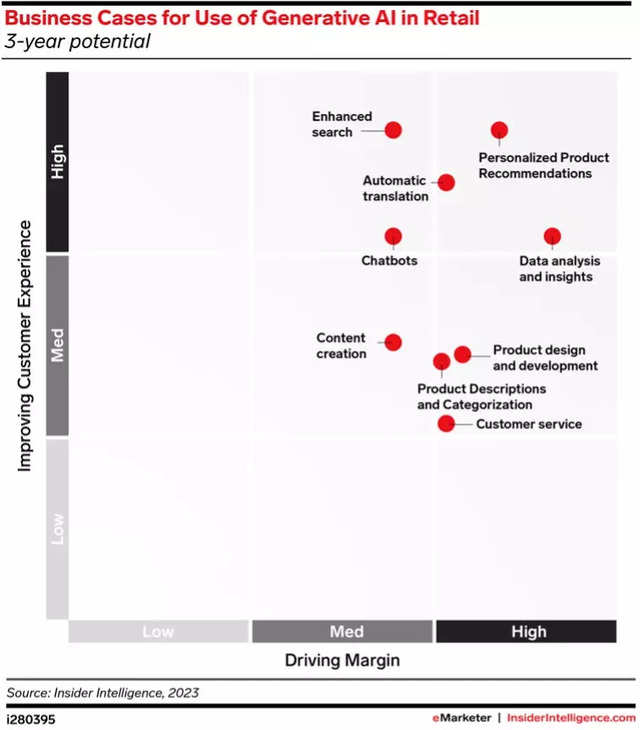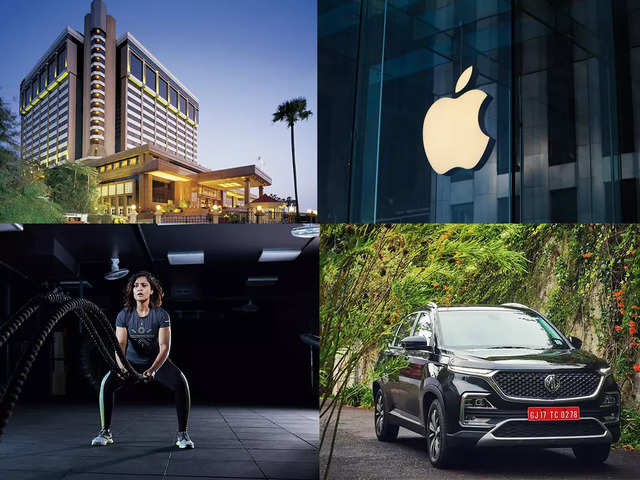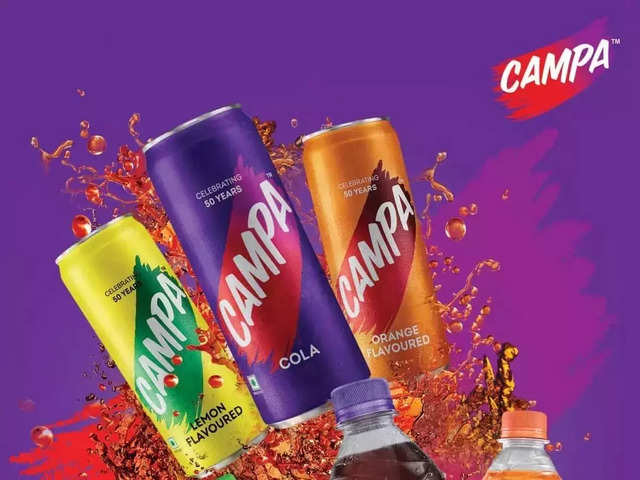
The report states that 85% of consumers said they will shop online regularly in the next 6 monthsPixabay
Shopify's report highlights shopping habits of consumers to the evolution of running, marketing, and funding an omnicha...
Dec 8, 2020, 16:30 IST
brands
86% Indians have adopted online shopping during the pandemic indicating accelerated adoption of ecommerce across age-groups: Shopify
Dec 8, 2020, 16:30 IST
Shopify's report highlights shopping habits of consumers to the evolution of running, marketing, and funding an omnicha...
- The key predictions for businesses in 2021 according to
Shopify are - Young consumers will change the business landscape as ecommerce charges ahead. - Physical retail as we know it will transform, giving local businesses new advantages.
- Consumers want to shop independent. Businesses will adapt to make that easier.
- More consumers will vote with their wallets.
- Modern financial solutions will disrupt business and consumer banking, financing, and lending.
To understand the kind of changes that have happened in the ecosystem, Shopify has released its first annual report*, Future of Commerce 2021, that marries global merchant and consumer data to predict how the commerce landscape will shift in the coming year. By examining perspectives of both seller and buyer, the report aims to capture the full picture of the industry to make predictions that span commerce in its entirety—from shopping habits of consumers around the world to the evolution of running, marketing, and funding an omnichannel
business today.
“At Shopify, we believe commerce is more than a transaction; it’s a relationship between a business and its customers. It’s only possible to report on the future by examining both audiences together,” said
world, we’re excited to look forward. Looking ahead, we see independent retailers and the next generation of consumers driving shifts that will pave the way for an even brighter future of commerce.”
Analyzing Shopify data from more than Shopify's one million merchants around the world and insights from their customers, this first annual Future of Commerce report reveals five key predictions for businesses in 2021 and beyond. They include:
1. Young consumers will change the business landscape as ecommerce charges ahead.
2. Physical retail as we know it will transform, giving local businesses new advantages.
3. Consumers want to shop independent. Businesses will adapt to make that easier.
4. More consumers will vote with their wallets.
5. Modern financial solutions will disrupt business and consumer banking, financing, and lending.
India Snapshot: Shopify Future of Commerce 2021
1. Young consumers will change the business landscape as ecommerce charges ahead. While the pandemic kick-started a behavioral shift to ecommerce, the highest shift was seen in young and middle aged consumers. Brands will need to adjust the way they do business to meet new consumer expectations and have staying power.
○ Consumers are hesitant to return to in-store shopping.
■ 84% have shopped online since the pandemic; 38% have shopped in-store.
■ 85% of consumers said they will shop online regularly in the next 6 months; significantly fewer (31%) say they’ll shop in-store regularly in the next 6 months.
■ 85% of younger consumers (18-34) & 90% middle aged consumers (35-54) years shifted more of their spending to online shopping since the pandemic was declared, compared to the 86% average.
■ Brands should pay attention to the habits of younger consumers as they lead the shift to ecommerce, especially because they are more likely to:
● Discover and shop via social media
○ 55% of younger consumers who purchase from independent retailers discover brands via social media compared to 45% of middle aged consumers 35-54 .and 33% of older consumers 55+
○ 41% of younger online shoppers said they purchased via social media, compared to 44% of middle aged online
shoppers and 22% of older online shoppers.
● Prefer to shop for sustainable and green products
○ 83% of young consumers(18-34) prefer to shop for sustainable and green products compared; 93% in the middle
aged bracket also prefer to shop for sustainable and green products
● Shop to have an impact
○ 42% of younger consumers who shopped from independent retailers since the pandemic was declared did so to have a positive impact on society, compared to 26% of middle aged consumers
“Although we have seen the greatest shift online among young consumers, the other key segments including middle aged and older consumers are also seeing significant numbers starting to go online for their shopping needs,”
2. Physical retail will transform as we know it, giving local businesses new advantages. Omnichannel features and experiences that retailers adopted in 2020 will give new life to physical stores and allow businesses to take advantage of proximity to local consumers.
○ Some of these new strategies and technologies resilient retailers adopted and will continue to offer include:
■ Contactless payments: 82% consumers are more comfortable making in-store purchases with digital / contactless payments (81% - younger consumers, 86% - middle aged consumers, 76% - Older consumers)
■ Alternative pickup and delivery options: Among those who used alternative fulfillment methods, over half did so more often in the past six months than before the pandemic was declared. These include:
● Local delivery: 71% of consumers are receiving items through local delivery more often than before the pandemic was declared.
● Buy online, pick up in store (BOPIS) or curbside: 69% of consumers are using BOPIS or curbside pick up options more often than before the pandemic was declared.
● Pick up point: 69% of consumers are using a pick up point option more often since the pandemic was declared.
■ Consumer pain points: Merchants will need to improve the following aspects of consumer touch points for better online experience. Top factors that made shopping online frustrating for consumers include:
● 42% say limited stock is a concern
● 36% feel shipping took longer
3. Consumers want to shop independent. Businesses will adapt to make that easier. Consumers expressed the desire to shop with independent businesses but still purchase from marketplaces for convenience. Independent brands will continue to close the gap.
○ Consumer intentions lean toward supporting independent & locally-owned businesses.
■ More than half of consumers (81%) look for independently owned businesses to support for reasons including: supporting entrepreneurship, buying unique products, and experiencing good customer service.
■ 86% of consumers say they support small businesses, while 83% say they look for locally owned businesses to support
○ Consumers’ intentions to support independent businesses are not yet reflected in their purchasing habits. However, this may change:
■ 44% purchased from marketplaces since the pandemic was declared, while 52% say they’ll continue to shop from Local / Independent businesses regularly in six months’ time.
■ 76% of consumers are willing to shop at new brands or stores for the first time.
○ Independent & Locally-owned retailers should highlight the benefits of their business models and adopt features offered by large retailers to meet consumer needs.
■ Fast and free shipping
● 42% of online shoppers say free delivery would improve their online shopping experience while 28% say free returns and 42% say faster delivery would make online shopping better.
● 75% of Shopify merchants who generated sales between March through September have free shipping enabled on their stores. (Shopify merchant data)
● In Q2 2020, Shopify enrolled more merchants and increased fulfillment volumes for Shopify Fulfillment Network by 2.5 times over Q1. (Shopify merchant data)
■ Conversational commerce
● As e-commerce continues to grow and retailers navigate challenges presented by COVID-19, fostering an online dialogue between merchants and customers is becoming increasingly important.
■ Merchant sales attributed to chat on Shopify Ping increased by 185% from March 16 to July 1, 2020. (Shopify merchant data)
○ Shoppable social media
■ Independent retailers are increasingly adopting ways to meet customers where they spend their time online.
■ At the start of the pandemic from March through April, marketing on Facebook and Instagram via Shopify’s channel integration saw 36% growth in monthly active users—a trend that continues to rise. (Shopify merchant data)
4. More consumers will vote with their wallets. Consumers will make an informed decision while choosing brands. Brands must demonstrate authenticity, transparency, and accountability as consumers increasingly support local businesses and sustainable products.
○ 87% of consumers prefer green or sustainable products.
○ 80% of consumers respond positively to retailers making a donation to a cause with each purchase.
○ 27% of consumers shop at local or independent retailers to reduce their environmental impact.
○ Consumers’ main reasons for shopping at a locally owned business (online or in-store) include:
■ Strengthening the local economy (37%)
■ Helping support local job creation (41%)
■ Investing in their community (22%)
○ 35% of Indian shoppers purchased something from an independently-owned retailer in the six months since Covid-19 was declared a pandemic
○ Top reasons for shopping independently include: having a personalized shopping experience (43%), having a positive impact on society (36%), and to reduce their environmental impact (33%)
○ More than (58%) of consumers who shopped at independently-owned businesses found them through recommendations, followed by through social media (48%)
5. Modern financial solutions will disrupt business and consumer banking, finance, and lending. Providing options that traditional banks don't offer, financial solutions that prioritize speed and access to capital, faster ways to pay, and more flexible payments like installments are growing in popularity among businesses and consumers.
○ The quality of the digital user experience is a key factor for merchants: 48% global consumers say a “good online banking or mobile app experience” is one of their top three most important features when considering a bank for their business.
○ More businesses are accessing capital outside of traditional banks: Across the US, Canada and UK, cumulative funding from
○ Buy now, pay later has grown in popularity: The number of Shopify merchants globally who offer buy now, pay later has increased by 60% since the start of the pandemic.
* This report is based on an online survey of over 10,000 consumers in 11 countries conducted in September 2020, as well as extensive global Shopify sales data from January 2018 to September 2020.
Certain sections of the report pertaining to business and consumer banking are based on two sources: an online survey of 950 Shopify merchants in the US conducted in September 2020, and an online survey of 1,000 consumers in the US conducted in December 2019.
* Local orders is defined by 25 km or less between merchant and consumer on a given sale.
INSIDER INTELLIGENCE REPORTS







